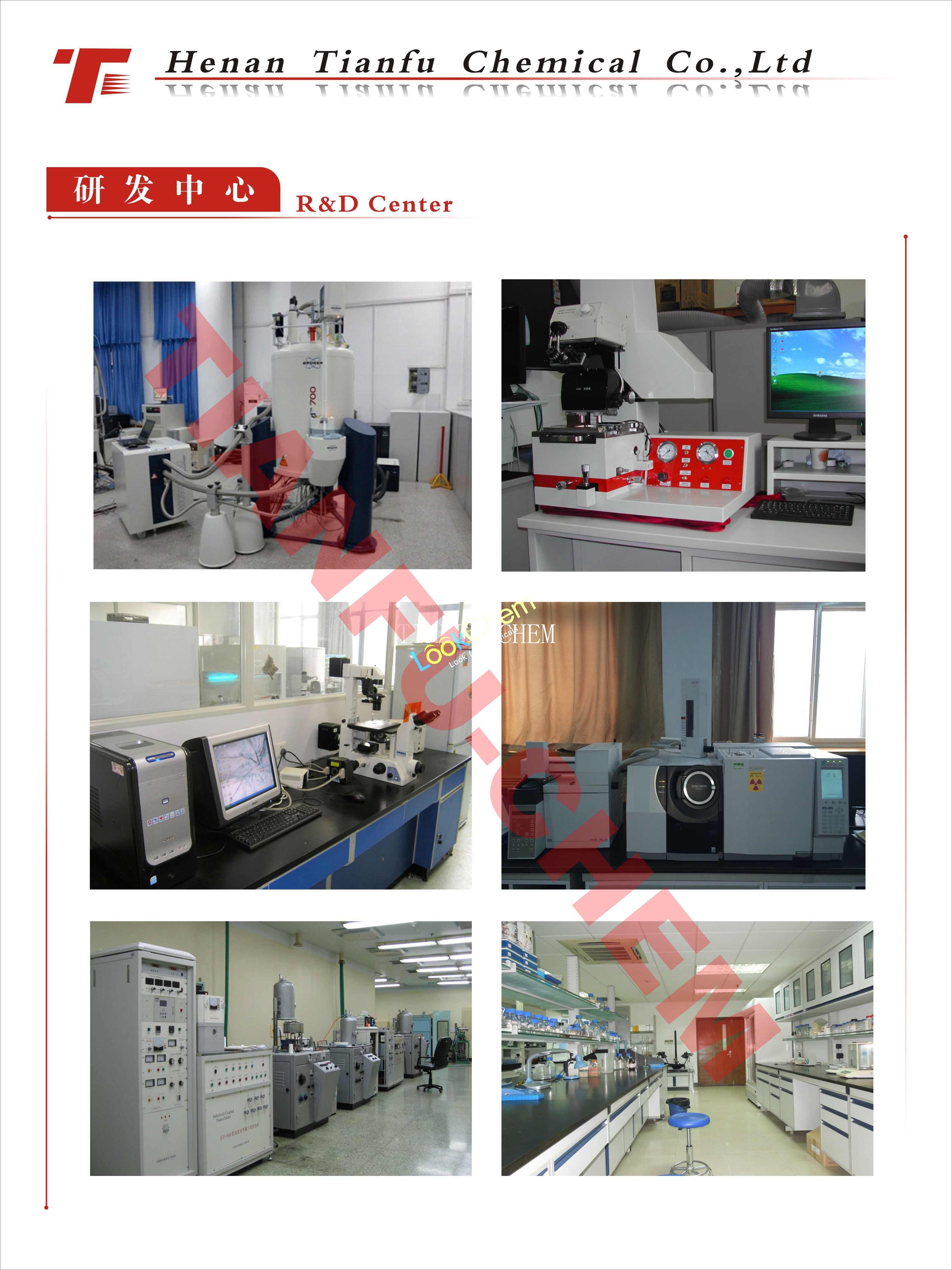131-89-5 2-CYCLOHEXYL-4,6-DINITROPHENOL
Min.Order / FOB Price:Get Latest Price
| 1 Kilogram |
FOB Price: USD 1000.0000 |
- Min.Order :1 Kilogram
- Purity: 99%
- Payment Terms : L/C,T/T
Keywords
131-89-5 2-CYCLOHEXYL-4,6-DINITROPHENOL C12H14N2O5
Quick Details
- Appearance:white powder
- Application:pharma
- PackAge:as clients needs
- ProductionCapacity:1|Metric Ton|Day
- Storage:RT
- Transportation:sea
Superiority:
Our company was built in 2009 with an ISO certificate.In the past 6 years, we have grown up as a famous fine chemicals supplier in China and we had established stable business relationships with Samsung,LG,Merck,Thermo Fisher Scientific and so on.Our main business covers the fields below:
1.Noble Metal Catalysts (Pt.Pd...)
2.Organic Phosphine Ligands (Tert-butyl-phosphine.Cyclohexyl-phosphine...)
3.OLED intermediates (Fluorene,Carbazole,Boric acid...)
4.Customs Synthesis
Our advantage:
1. Higest quality and good package
2.Fast delivery
3.Better payment term
4.Fast response to customer within 6 hours
5.Good business credit in Europe ,US ,Japan ,Korea
Anyway ,if you need any chemicals from China ,Henan Tianfu can help you

Details:
Safety Information
Hazard Codes T,N
Risk Statements 23/24/25-50/53
Safety Statements 13-45-60-61
RIDADR 2779
HazardClass 6.1(b)
PackingGroup III
MSDS Information
2-CYCLOHEXYL-4,6-DINITROPHENOL Usage And Synthesis
General Description Yellow crystals.
Reactivity Profile Reacts with oxidizing materials and combustibles [USCG, 1999]. Special Hazards of Combustion Products: Can detonate or explode when heated under confinement [USCG, 1999]. Aromatic nitro compounds, such as 2-CYCLOHEXYL-4,6-DINITROPHENOL, range from slight to strong oxidizing agents. If mixed with reducing agents, including hydrides, sulfides and nitrides, they may begin a vigorous reaction that culminates in a detonation. The aromatic nitro compounds may explode in the presence of a base such as sodium hydroxide or potassium hydroxide even in the presence of water or organic solvents. The explosive tendencies of aromatic nitro compounds are increased by the presence of multiple nitro groups. Phenols do not behave as organic alcohols, as one might guess from the presence of a hydroxyl (-OH) group in their structure. Instead, they react as weak organic acids. Phenols and cresols are much weaker as acids than common carboxylic acids (phenol has Ka = 1.3 x 10^[-10]). These materials are incompatible with strong reducing substances such as hydrides, nitrides, alkali metals, and sulfides. Flammable gas (H2) is often generated, and the heat of the reaction may ignite the gas. Heat is also generated by the acid-base reaction between phenols and bases.
Health Hazard Liver damage, metabolic stimulant, dermatitis, dilation of pupils.
Fire Hazard Special Hazards of Combustion Products: Can detonate or explode when heated under confinement.

You Might Also Like
-
25377-73-5 DODECENYLSUCCINIC ANHYDRIDE
CAS NO:25377-73-5
-
High Quality N,N'-(decane-1,10-diyldi-1(4H)-pyridyl-4-ylidene)bis(octylammonium) dichloride Octenidine dihydrochloride 70775-75-6
CAS NO:70775-75-6
-
High Quality Diethyl malonate 105-53-3 In Stock Supply
CAS NO:105-53-3
-
2378-02-1 PERFLUORO-TERT-BUTANOL 99%
CAS NO:2378-02-1
-
2926-29-6 Sodium trifluoromethanesulfinate 99%
CAS NO:2926-29-6
-
CAS 621-27-2 3-N-PROPYLPHENOL
CAS NO:621-27-2
Related Searches
About|Contact|Cas|Product Name|Molecular|Country|Encyclopedia
Message|New Cas|MSDS|Service|Advertisement|CAS DataBase|Article Data|Manufacturers | Chemical Catalog
©2008 LookChem.com,License: ICP
NO.:Zhejiang16009103
complaints:service@lookchem.com Desktop View